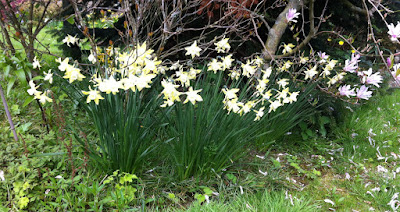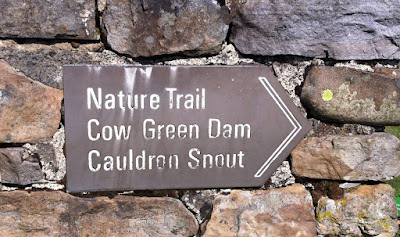Kirkcarrion, or Caryn's Castle, or Kirk Arran is a well known landmark in Teesdale, and is visible for miles around.
It's a copse of pine trees, surrounded by a low stone wall, atop a hill. The trees are over a tumulus, said to contain the grave of Caryn, a Bronze Age chieftan. In 1804, a farmer used some of the stones to build a wall. subsequently, local landowner, Lord Strathmore, removed many of the grave goods to his home, near Barnard Castle. As a mark of respect, he built the walls around the burial mound at Kirkcarrion, and planted the trees. It is believed that this did not appease Caryn, whose ghost is said to haunt the place still.
Local tradition says it's lucky to climb the hill on Mayday morning; we were a couple of weeks late, but the walk is none the less spectacular for that.
We parked the car on a side road, and took the footpath up from just outside Middleton.

Soon we were onto open access moorland, so just walked up the hill heading for the trees. We saw plenty of Swaledale sheep, and some curlew; my first sighting close-up.
It was blowing a hoolie, so we raced for the summit, but once among the trees, we could appreciate the views; looking over into Lunedale, with good views of Grassholme reservoir.





































